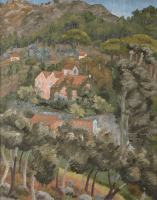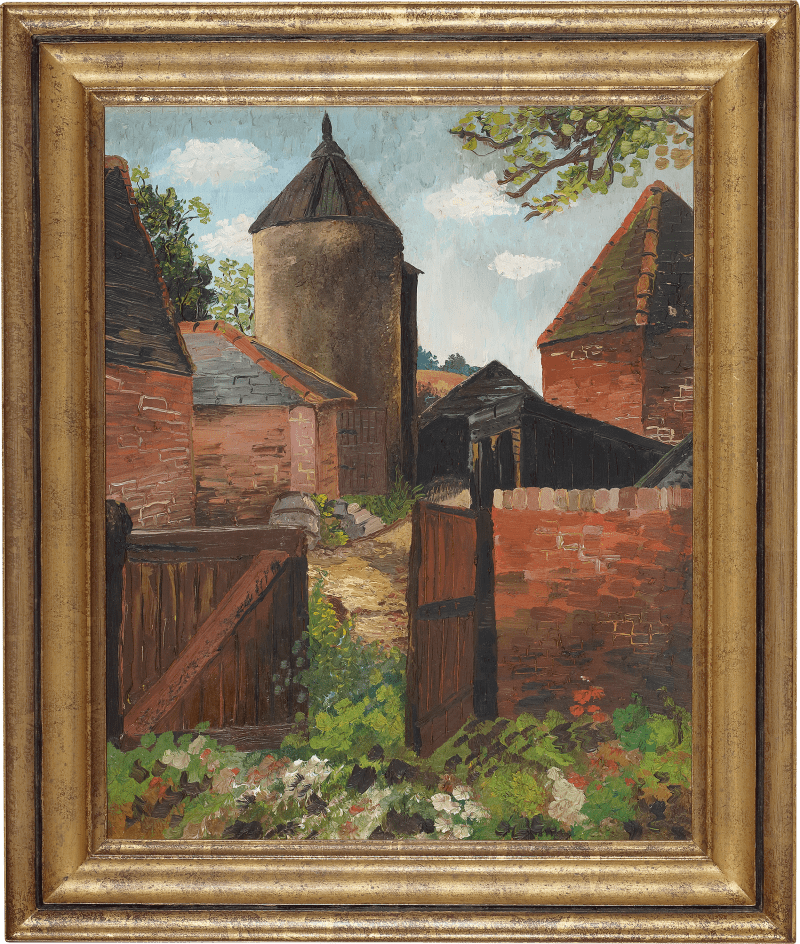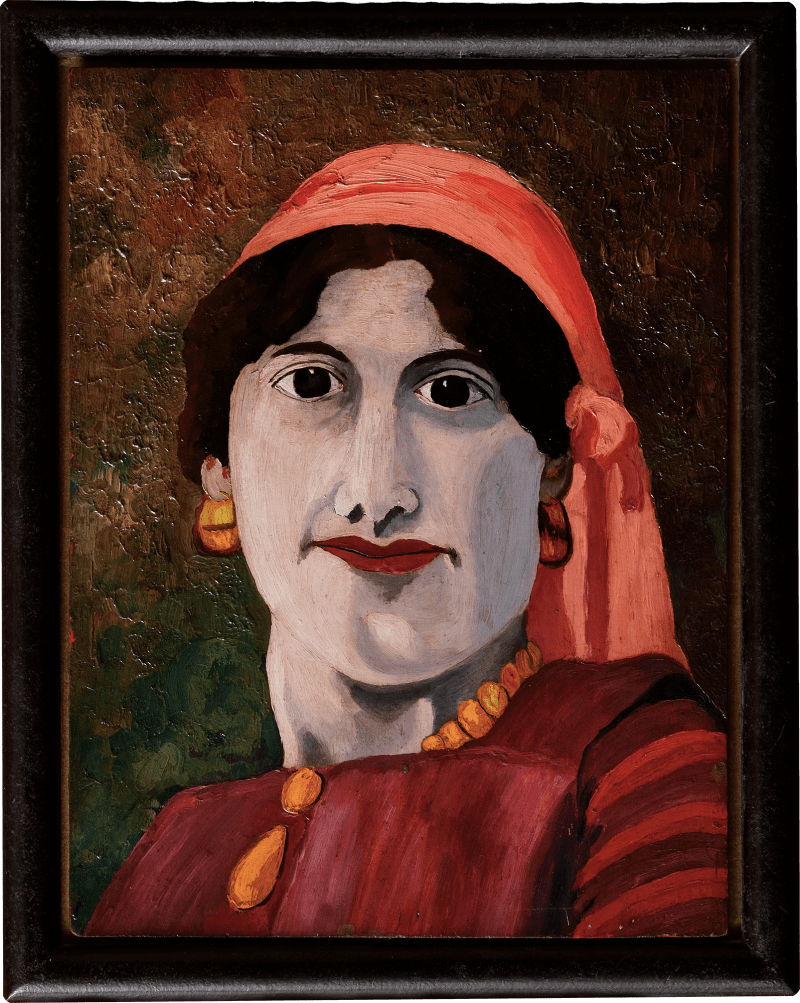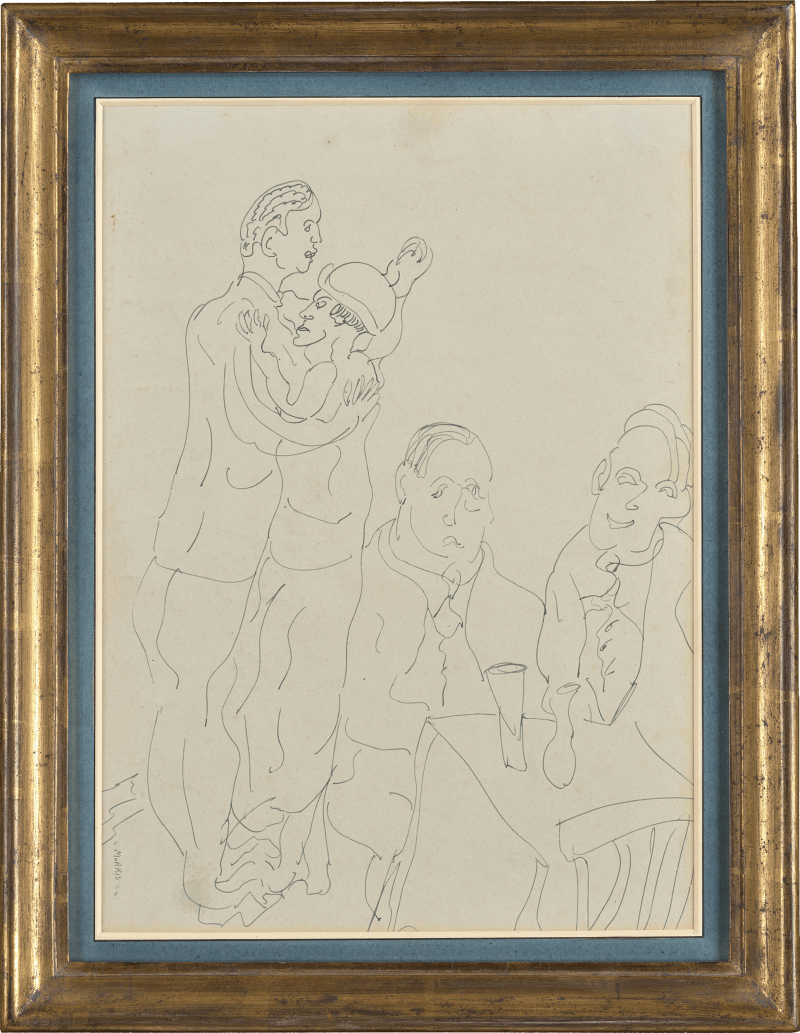Cedric Morris travelled extensively throughout his life and the landscapes he painted on his trips abroad form an important part of his extensive oeuvre.
In the early 1920s when Morris and his partner Arthur Lett-Haines were living in Paris, they would travel around Europe and the Maghreb painting landscape views and the occasional portrait. However, in the decades following the Second World War, Morris’ sojourns abroad combined painting with his other great passion – hunting for rare plant species. Understanding the native plants of foreign countries was crucial to his expanding cultivation of exotic species at home and his artistic translation of them onto canvas. As is made clear by its original title, this sun-baked landscape celebrates Portugal’s famous winding cork oaks, which dominate the foreground of the composition.
Painted in the rolling mountainous range of the Serra de Monchique, this landscape captures the calm and healing climate for which the region is so well renowned. It was painted...
Cedric Morris travelled extensively throughout his life and the landscapes he painted on his trips abroad form an important part of his extensive oeuvre.
In the early 1920s when Morris and his partner Arthur Lett-Haines were living in Paris, they would travel around Europe and the Maghreb painting landscape views and the occasional portrait. However, in the decades following the Second World War, Morris’ sojourns abroad combined painting with his other great passion – hunting for rare plant species. Understanding the native plants of foreign countries was crucial to his expanding cultivation of exotic species at home and his artistic translation of them onto canvas. As is made clear by its original title, this sun-baked landscape celebrates Portugal’s famous winding cork oaks, which dominate the foreground of the composition.
Painted in the rolling mountainous range of the Serra de Monchique, this landscape captures the calm and healing climate for which the region is so well renowned. It was painted during Morris’ first trip to Portugal with Lett and artist-plantswoman Primrose Harley[1] in 1950. He returned many times, often in the company of plantsman and lover Nigel Scott; these trips were primarily plant-hunting expeditions, although Morris always prioritised time to paint the surrounding landscapes. Preferring to work directly with oil paint on canvas, Morris rarely sketched his compositions in advance, meaning that almost all his canvases were painted en plein air whilst travelling. This working method results in the honest and earthy embodiment of his subject matter as epitomised by this directly observed landscape, swathed in heavy forest and thick impasto.
Throughout the 1950s Morris became increasingly vocal about his opposition to the emerging use of pesticides, and humankind’s destructive treatment of the natural world more generally. This landscape seems to offer an alternative way of living, in which man and nature live in harmony; the modest dwellings that pepper the hillside are consumed by their verdant surroundings. A subtle indication of the skyline relegated to the extreme edge of the canvas indicates the sheer height of the towering mountain range. As an artist who had purposefully left metropolitan city life in pursuit of a more contemplative existence, it isn’t hard to comprehend why this bucolic setting appealed to Morris and his fervent paintbrush.
Morris painted persistently during his travels, so much so that the letters he wrote to Lett-Haines record his grievances at the expense of shipping paintings back home from abroad.[2] This painting was shipped home from the Algarve and was sold by Morris and Lett-Haines through the Ixion society (a company managed by Lett-Haines which handled the commercial side of Morris’ artistic practice) to the mother of the previous owner. Two years after this trip, Morris held his third exhibition at the Leicester Galleries in London in which he exhibited numerous travel landscapes, including a Landscape in the Algarve.[3]
[1] Primrose Harley was also an artist and horticulturalist who studied under Morris at the East Anglian School of Painting and Drawing.
[2] C. Woodward, ‘Cedric Morris’ Winter Journeys’, Garden Museum, 2021 (accessed 8 December 2022) [available via: https://gardenmuseum.org.uk/cedric-morris-travels/].
[3] Catalogue of an Exhibition of Painting by Cedric Morris. London: Ernst Brown & Philips Ltd, 1952, Landscape in the Algarve, cat 22.











